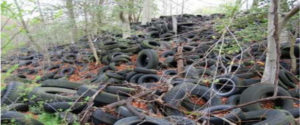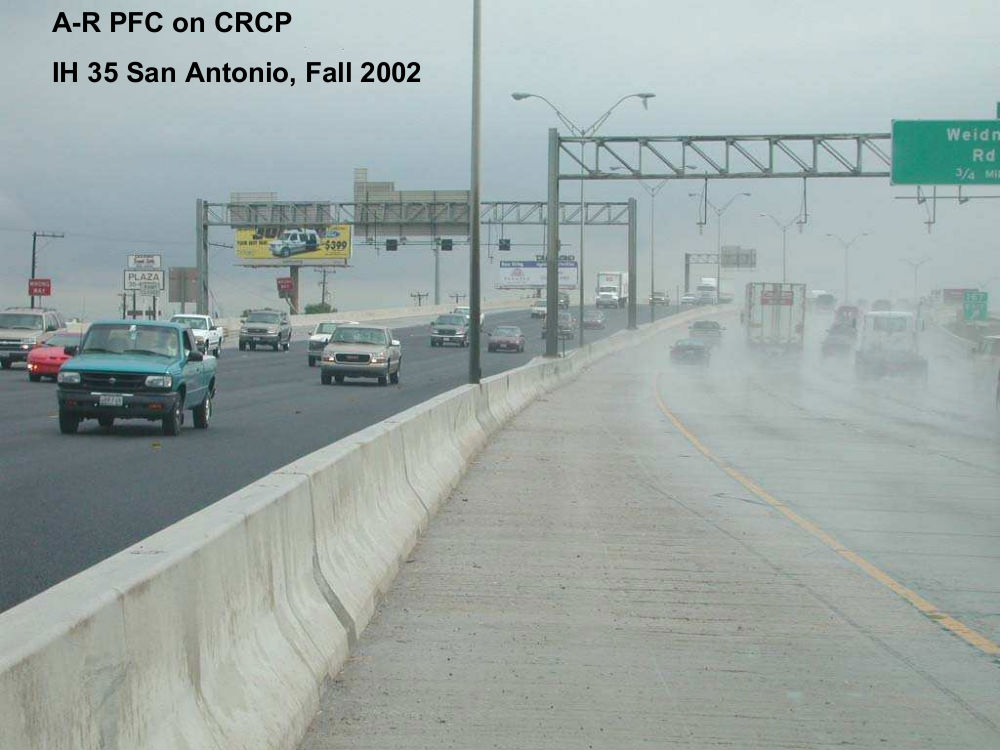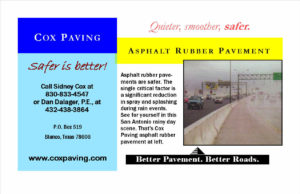Asphalt Rubber
Before and after data kept on roads paved with asphalt rubber surfaces have shown a significant decrease in auto accidents overall, and a tremendous decrease in wet weather accidents. Asphalt rubber provides much better drainage during rain, thereby providing better traction and improved visibility.
Studies show that over 75% of traffic noise on highways with average vehicle speed of 60 mph comes from rolling tires. The tires are not the x-factor in this equation, however, the pavement is. An asphalt rubber surface can reduce traffic noise better than any other material. Tests run on I-35 in San Antonio for a Cox Paving asphalt rubber PFC showed average noise reduction of 8 decibels, a massive decrease, and the Texas Department of Transportation received many positive comments from business owners and residents.

Using an asphalt rubber binder in a pavement greatly increases the life of the pavement due to its superior resistance to cracking and wear. Many experiments have been performed and many projects have been studied over time. The result is always the same: asphalt rubber materials, when designed correctly, will last longer than conventional asphalt or any other asphalt modifiers on the market today.
Much of the deterioration of a road surface is the result of water and pressure building through cracks in the pavement. Due to the flexibility of rubber in asphalt, asphalt rubber surfaces resist cracking for much longer than other asphalt surfaces.
Testing has shown that a 1.5-inch asphalt rubber overlay will generally outperform a 3 inch overlay of regular asphalt by 3 to 1. This results in much lower maintenance costs over time, not to mention the aggregate and asphalt oil saved by only having to make the overlay half as thick.

Properly done asphalt rubber road surfacing is one of those situations where a process is both the most cost effective choice over time as well as the most ecologically friendly. There are several reasons why hot asphalt rubber pavement is environmentally superior to any other type of asphalt.
Approximately 270 million scrap tires are generated in the United States every year. Some are sent to landfills, some are stockpiled, and some are recycled. In landfills, tires take up valuable space and, due to their tendency to trap methane gases, become buoyant, usually bubbling to the surface and damaging landfill liners designed to prevent contaminants from polluting surface and ground water. Many states have banned tires from landfills. In stockpiles, tire fires are not uncommon. These fires often burn for months and cause significant air and ground pollution. Illegal dumping of tires pollutes ravines, woods, deserts, lakes, and rivers. Tire rubber can be recycled in a variety of ways and for a variety of uses. The most effective is to ground it into crumb about the density of coffee and mix it with hot asphalt to apply to a road surface. Cox Paving of Texas has recycled over 8 million tires in the last ten years doing just that.
A hot asphalt rubber mix consists of 17-22% rubber. That’s 17-22% less asphalt oil, a dwindling resource with an extremely volatile price range. Tire rubber holds a consistent price and needs to be recycled.
Hot asphalt rubber pavements last longer than other asphalt pavements. The general consensus among engineers familiar with the product is that it lasts about twice as long as traditional asphalt. In addition, an asphalt rubber PFC can also be laid half as thick as a traditional asphalt PFC. This means fewer materials needed on the initial PFC and much less maintenance required over time. Cost effective, eco-friendly.
Asphalt rubber pavements are quieter, far quieter, than other pavements. Asphalt rubber surfaces result in less noise pollution as well as fewer noise barrier walls required. Fewer noise barrier walls mean less time and money spent and a smaller carbon footprint.



